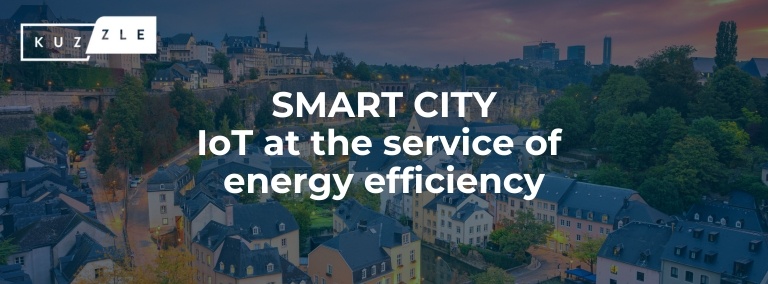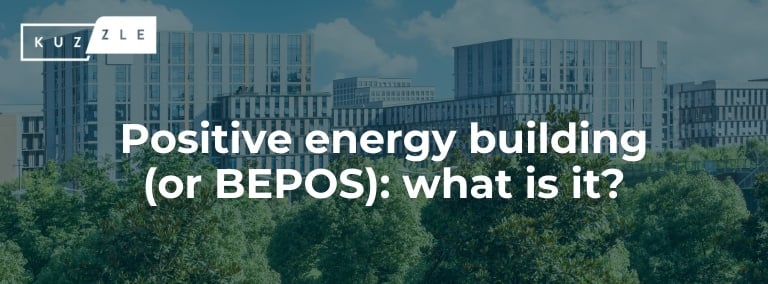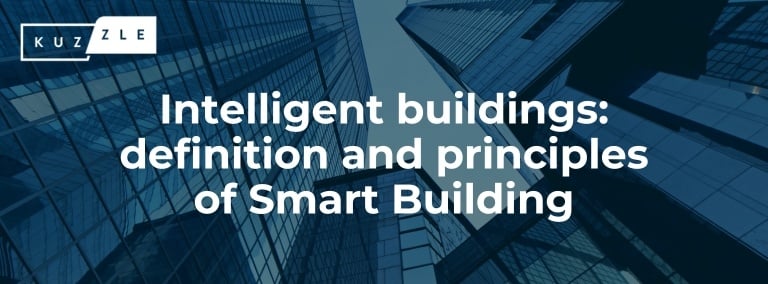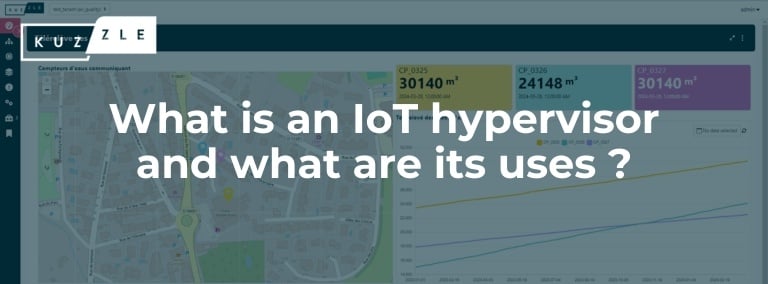An intelligent territory is one in which public services and policies are driven by data, using a range of digital tools. In France today, this concept covers very different realities. In 2017, fewer than thirty territories had embarked on a smart project. All were major cities or metropolises. Today, more than 200 territories have launched their own projects incorporating digital innovations. They come in all sizes (urban, suburban, rural). In the face of this diversity, use cases have also evolved. From smart city to smart territory, we take a look at the key applications of IoT.
In summary :
- IoT & Smart City: what's in it for local authorities?
- Connected territories and smart cities: common components and challenges
- What are the applications of IoT in smart-cities?
- Key use cases for IoT in Smart Cities
- What's the point of an IoT platform for hypervision of territorial data?
IoT & Smart City: what's in it for local authorities?
The Internet of Things (IoT) is a network of interconnected objects, information systems, resources, standards and protocols, enabling the development of services linked to data processing and the activation of connected objects.
Sensors are one of the essential building blocks of the IoT. There are as many types of sensor as there are physical quantities to be captured (light, presence, position, humidity, sound, vibration, electric current, presence or absence of a gas, flow, force, pressure, level, etc.). Sensor connectivity is usually provided by a radio antenna. This enables the object to communicate with one or more networks, guaranteeing real-time data feedback. The sensor can also provide information on its identity, positioning or any anomalies it detects.
The technologies available are now mature, and innovations continue to emerge. We have recently seen the implementation of embedded systems capable of calculations and processing at sensor level, or at each link in the technological value chain. The aim is to bring data processing closer to the IoT, reducing the volume of data collected by targeting the information required.
This is known as local data processing capacity. For example, the technical services of a local authority don't need real-time data on the pressure of their water network, but rather the minimum, maximum and average values needed to identify the appearance of a leak.
Connected territories and smart cities: common components and challenges
Local councillors, whatever their size, see the opportunities and challenges in using the Internet of Things (IoT) to enhance the performance, variety and quality of services offered to their constituents. Thanks to the data collected, it's no longer a question of “just” delivering, implementing and ensuring a service, but rather of projecting, forecasting and creating cross-functionality and coherence, so that the service offering brings significant value to public policies.
The common objectives of Smart Territories and Smart Cities projects are to use IoT and data-driven management of public services to develop new uses, promote the mastery of territorial data, increase the performance and efficiency of public services, improve the experience of local users and stakeholders, move towards more transparent and participative modes of governance, and support the public sector in meeting the challenges of the ecological, solidarity-based and digital transition.
These projects must systematically integrate ecological transition objectives, in particular through the choice of responsible digital tools.
What are the applications of IoT in smart-cities?
Intelligent territory projects primarily concern the fields of mobility, energy, water and waste, but also many other business verticals.
The implementation of IoT sensors in public infrastructures and on the territory enables in particular:
- Optimize building performance
- Measure air quality
- Manage energy consumption
- Analyze water consumption
- Monitor rising water levels
- Control indoor temperature
- Manage waste and optimize collection rounds
- Control urban lighting
- Monitor parking
Agents are alerted in real time when thresholds are exceeded, malfunctions or anomalies are detected, enabling rapid intervention.

Key use cases for IoT in Smart Cities
An intelligent territory project can be approached in a global, cross-functional and disjointed way, as in Dijon, Angers, La Rochelle or Cozzano. But it can also be deployed step by step, initially as an opportunity when renewing a concession (public lighting, parking management, etc.), as a priority (the management of city-center shops in many “Action Coeur de ville” areas) or simply out of appetence.
In this sense, intelligent street lighting is often the first step taken by many local authorities. When a contract comes to an end, it's time to renew all the equipment: bulbs, masts, cabinets, etc., and move towards connected, eco-responsible street lighting that enables :
- Real-time adaptation of light output to usage, to reduce environmental impact and energy costs
- Remote control of streetlight start-up and lighting levels, with predefined start and end dates and times.
- Define periods of use and program operating periods
- Provide alerts in the event of sensor malfunction, to optimize maintenance.
Water, gas and electricity are all resources whose management can be effectively rethought using IoT. In 2020, as part of its Smart Connect project, the Finistère region launched the development of a territorial data and IoT platform to pilot businesses and monitor public infrastructures with the smart grid. In all, 270 communes in the department are now monitored in real time, thanks in particular to the Kuzzle IoT platform. Other territories have followed suit, including Albères Côte Vermeille Illibéris, the Gironde Numérique project, the Alès conurbation (30) and Noisy-le-Grand (93).
Waste management is also evolving as a result of two concomitant dynamics. On the one hand, it enables waste management authorities to monitor the state of their fleet in real time. This makes it easier to organize routes. On the other hand, some local authorities want to introduce a fee based on weight. They are investing in solutions for weighing bins and skips. The management of food waste, particularly in connection with catering, is another issue identified by local authorities. With a view to reducing and recovering this waste, measures are being taken to make users more aware of their consumption.
Global warming is creating new uses, such as forest surveillance following the recent wildfires.
What's the point of an IoT platform for hypervision of territorial data?
The sensors deployed produce, consume and use massive, heterogeneous data. Connectivity is therefore the foundation of the entire IoT architecture, without which nothing is possible. On this point, the question of data interoperability is an essential consideration. But data collection requires a suitable IoT platform, also known as a hypervisor IoT platform.
This space is intended to be a single gateway to the control and data visualization of a range of urban functions. The online platform offers a complete overview of the current state of all territorial assets, enabling remote monitoring and control actions, and correlating different data in business dashboards to produce analyses.
How do you choose the right Iot platform for your connected city project?
- Calibrate a technological base by defining your needs and structuring your data.
- Determine the development mode, bearing in mind that Europe is promoting the use of open source for all public administrations, and specifically for intelligent territories. In France, a recent ministerial circular reminds us of the importance of source code for public authorities. These challenges are economic, but they also concern technical guarantees (interoperability in particular) and the assurance of preserved public sovereignty.
- Interoperability of systems and technologies.
- Scalability. Opt for a scalable solution, whose capacity can be adapted according to your needs and/or the volume of data collected.
- Expandable. Ensure that the platform can accommodate new business functionalities and new technological entrants, i.e. innovations that gradually integrate the smart territory field.
- RGPD. Ensure rigorous protection of personal data and compliance with European legislation.
- Data management: choose a system that enables you to manage your users and their rights.
- Hosting: choose between a cloud, on-premise or hybrid solution, depending on your organization's digital strategy, infrastructure and financial capabilities.
You have a Smart City project ? 





